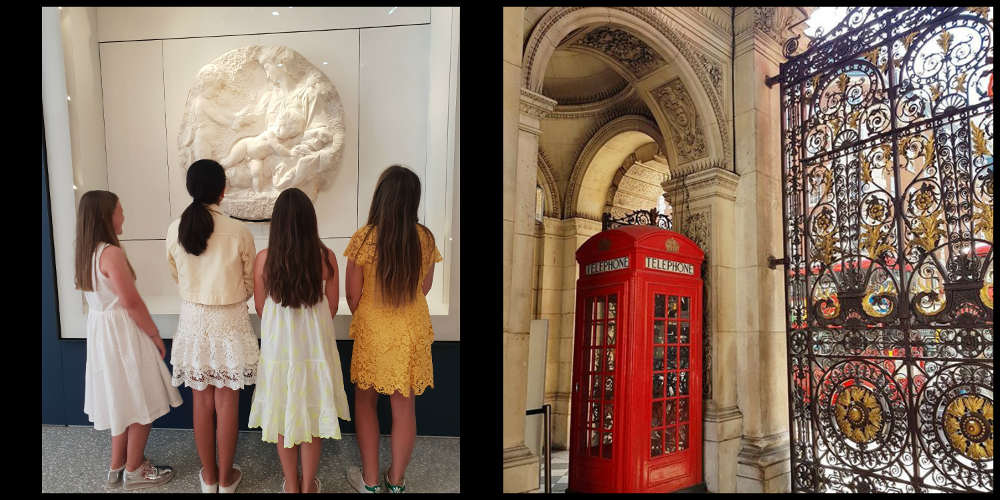
Must-see Art for Kids in London
Linda Doran 01/25/2025Kids in London ArticleIt’s all very well dragging the kids to London’s big-name museums, but which galleries and museums will your children actually like? And once you’re there, which painting, sculpture or object will they really appreciate? London is one giant artscape, and with most of it free, it’s hard to decide where to take children. Follow me for a guide to some of the best museums for kids and teens and some must-see art for kids in London.
Must see Art for Kids in London
Knights and a Cavalier at the Wallace Collection
The Wallace Collection is located near the Selfridges department shop in chi-chi Marylebone. The astonishing art collection (it’s a who’s who of famous painters) is housed in a London town house once owned by Sir Richard Wallace.
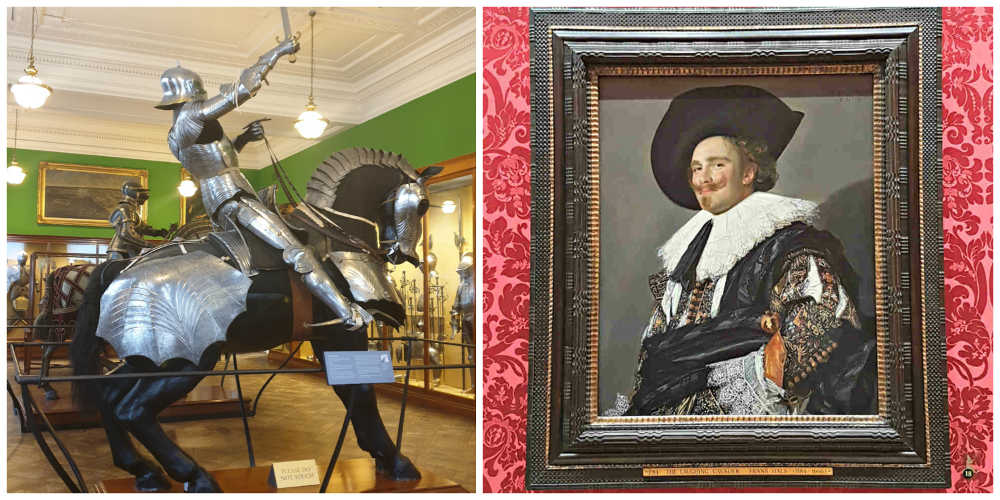
Armour for Man and Horse. There are only three near-complete horse armour examples in the world, and you can see one of them in the Wallace’s fine armour collection. It’s perfect for budding knights. Location: European Armoury II room on the Ground Floor.
The Laughing Cavalier. Head upstairs to see one of the crowning jewels of the collection by Frans Hals. No one knows who the cheeky man is, but we do know he was 26. Get up close to the portrait, and look at the doublet embroidery and the incredible detail on his moustache. Location: Great Gallery.
Whilst you’re here: have a cuppa and cake in one of London’s prettiest tea rooms.
The Wallace Collection, Hertford House, Manchester Square, W1U 3BN. Admission is free (there may be a charge for temporary exhibitions).
British Masterpieces at Tate Britain
The Tate was named after its founder, the sugar magnate Henry Tate. Visitors flock to Tate Britain to see the Turner collection which the painter bequeathed to the nation. It is the world’s largest collection of Turners and should be seen by everyone at least once.
Carnation, Lily, Lily, Rose. The picture of childhood if ever there was one, this exquisite work of art by John Singer Sargent shows two young girls in an English summer garden. Sargent painted these outside and every day at dusk from September to November 1885. As autumn set in, he would replace dead flowers with artificial ones. The painting is unusual in that it is square. Location: Walk Through British Art
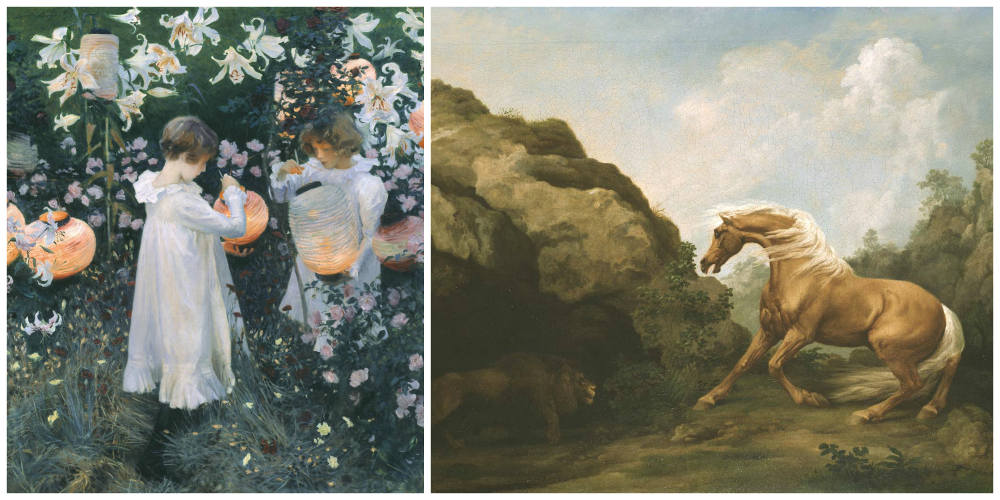
Horse Frightened by a Lion. George Stubbs created eighteen versions of this work, from the lion’s initial encounter with the horse to the moment the cat devours its prey. I always think this is a fascinating piece for kids to dissect. Look at the way both bodies are animated: Stubbs has captured despair and terror in the horse, whilst the predator lion displays calm and anticipation. Location: Walk Through British Art.
Whilst you’re here: check out the David Tremlett staircase which is made with pastel crayons. When you walk out of the Tate, look across the Thames towards the SIS Building (or M16) which is featured in several Bond films.
Tate Britain, Millbank, SW1P 4RG. Admission is free (there may be a charge for temporary exhibitions).
Dickens and a Hedgehog at the Charles Dickens Museum
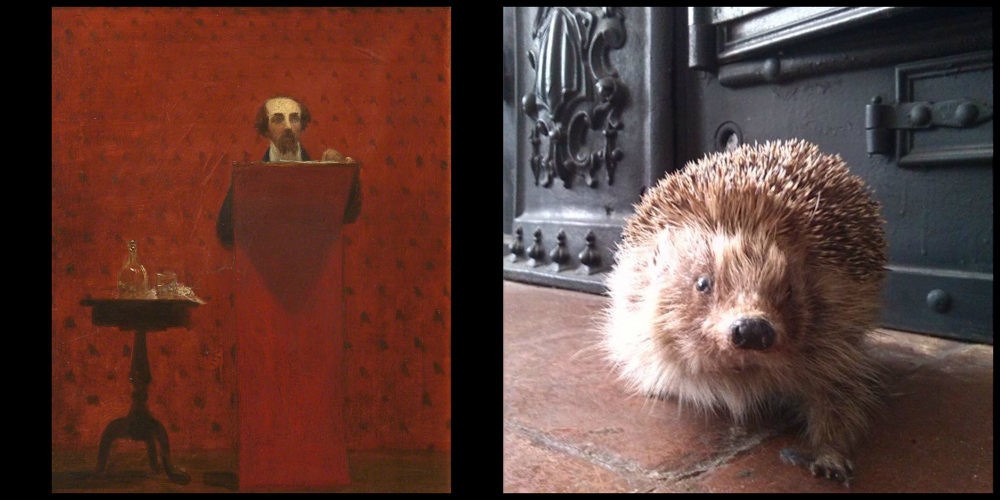
Charles Dickens Giving a Public Reading. Dickens fans and lovers of A Christmas Carol will want to stop by the Dickens Museum where there are several portraits of the author. See the Lost Portrait which shows Dickens as a young man, and Charles Dickens Giving a Public Reading (the original lectern at which he is perched stands next to the painting).
Whilst you’re here: look out for Bill Spikes, the resident hedgehog, who lives in the basement kitchen. Treat yourself to tea and cake in the lovely café.
The Dickens Museum. 48 Doughty Street, WC1N 2LX. Adult entry: £9.50, Child entry: Free (Under 6). £4.50 (6-16 years)
The UK’s only Michelangelo marble at the Royal Academy of Arts
Michelangelo’s Taddei Tondo is the only sculpture by the artist in a UK collection. It is believed to have been carved around 1504 in Florence. John Constable once described it as “one of the most beautiful works of art in existence.”
Whilst you’re here: check out the two red phone boxes tucked away behind the front gates to the Royal Academy. These phone boxes are listed buildings in their own right, designed by Sir Giles Gilbert Scott (also designer of Battersea Power Station and Waterloo Bridge). Scott’s original wooden prototype can be found on the left-hand side of the entrance to the Royal Academy, and his design for the cast-iron version is on the right.
The Royal Academy, Burlington House, Piccadilly, W1J 0BD. Admission is free (there may be a charge for temporary exhibitions)
The Royal Family at Buckingham Palace
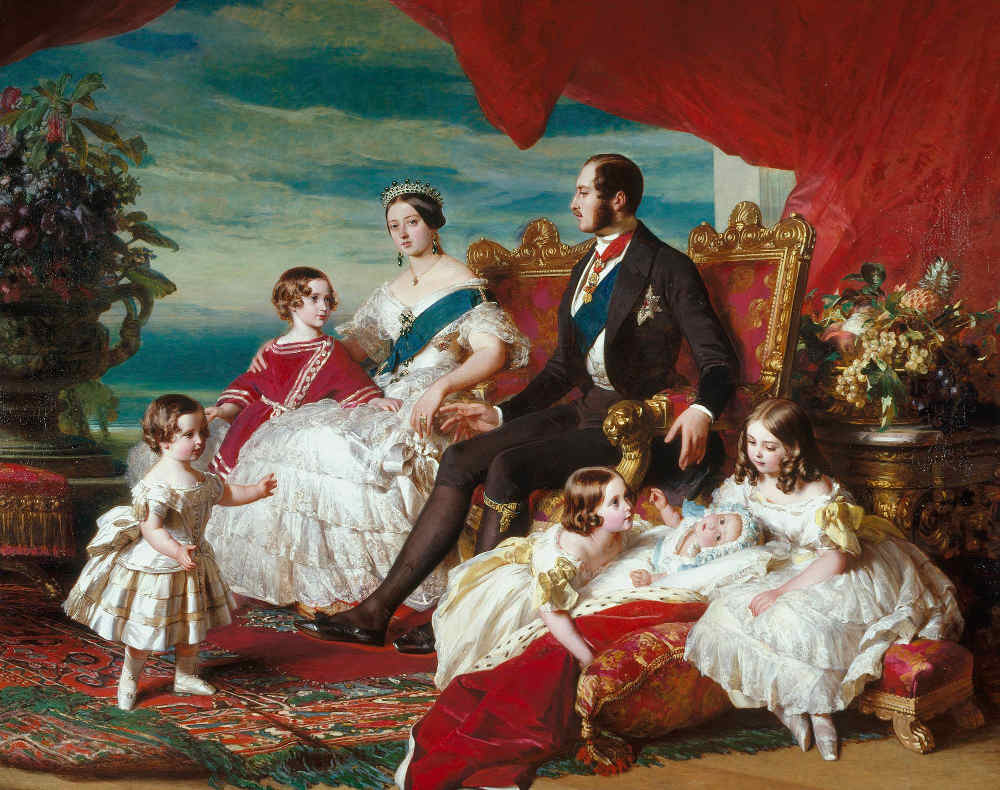
There are so many paintings to see at Buckingham Palace (The Queen has the largest private art collection in the world), and with a hefty entrance price, you will want to make the best of it. You can waltz your way around the magnificent State Rooms which are open for 10 weeks during the summer, but you’ll want to stop and stare at the paintings in the Picture Gallery. There’s a dizzying 47 metres of artwork in here with Titians, Van Dycks, Rembrandts and Rubens, to name a few.
The Royal Family in 1846. Heading out of the Picture Gallery towards the East Gallery is this glorious painting of the Royal Family in 1846 by Franz Xaver Winterhalter and commissioned by Queen Victoria.
Whilst you’re here: Check out the Family Pavilion in the Palace Garden, an area for under 12s with a range of games and activities.
Buckingham Palace State Rooms, Westminster, SW1A 1AA. Adult entry: £26.50. Child entry: Free (Under 5) £14.50 (6-17 years). Note: you can enjoy free re-entry into the palace for 12 months. Make sure you get your ticket validated.
Masterpieces at the National Gallery
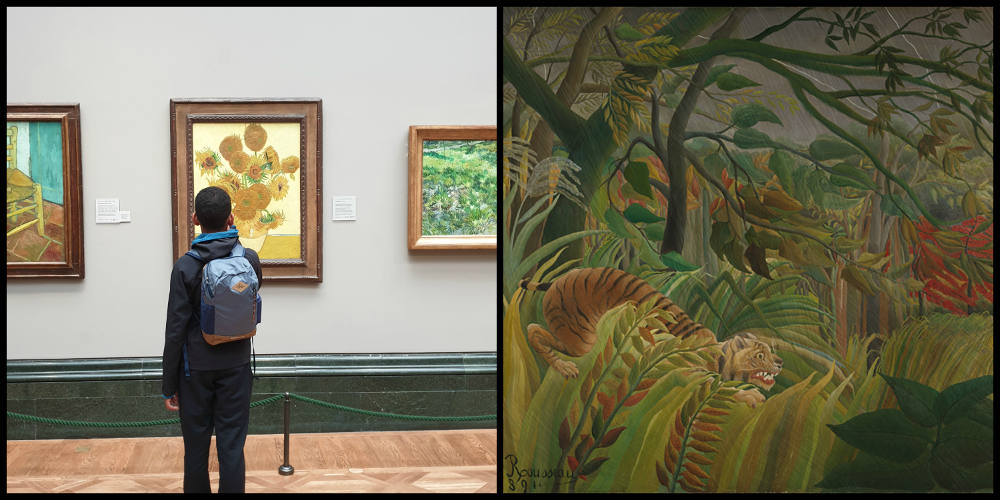
It’s easy to spend a whole day getting lost in the astonishing collection at the National Gallery. It’s located in Trafalgar Square next door to the National Portrait Gallery, so you could try and make a day of it with both galleries. You can rest your weary feet in the National Dining Room upstairs which serves pizza and has some of the best views in London.
Masterpieces which children must see when they visit the National Gallery include Vincent van Gogh’s Sunflowers, Henri Rousseau’s Surprised!, Claude Monet’s The Water-Lily Pond (not currently on display) and Georges Seurat’s Bathers at Asnières. Location: all in Room 43.
National Gallery, Trafalgar Square, WC2N 5DN. Admission is free (there is a charge for most temporary exhibitions)
Shakespeare and The Queen at the National Portrait Gallery
The National Portrait Gallery opened in 1856, and it now houses the world’s largest collection of portraits. It’s located on Trafalgar Square, next to the National Gallery.
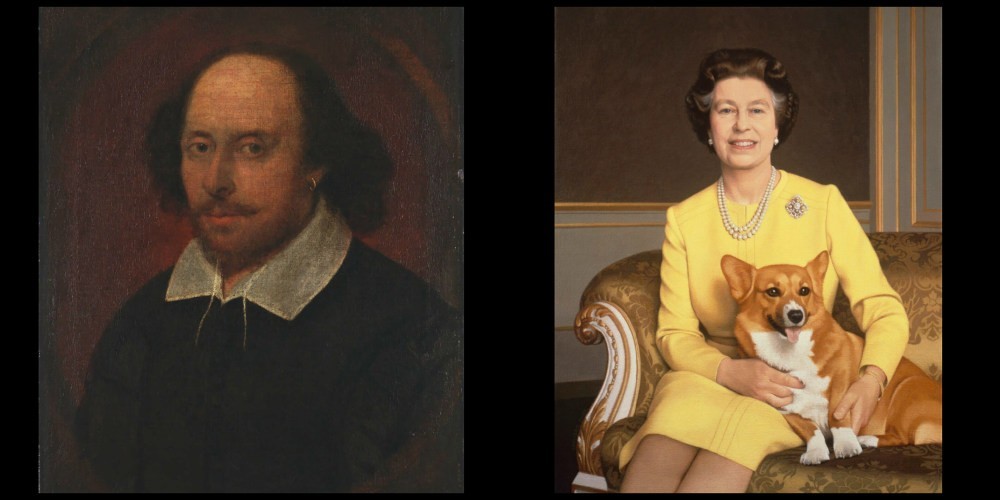
The National Portrait Gallery was founded with a portrait of the country’s greatest playwright and poet, William Shakespeare. Be still my beating heart! It is thought to be the only portrait of the Bard painted from life. Location: Room 3 .
A visit to London wouldn’t be proper without saying hello to Her Majesty the Queen. Here she is with corgi, Spark, sitting in the Yellow Drawing Room at Buckingham Palace. Curtseying and bowing is optional. Location: Room 32.
Whilst you’re here: check out the portraits of Sir Wintson Churchill (room 31) and Jane Austen (Room 18).
The National Portrait Gallery, St Martin’s Place, WC2H 0HE. Admission is free (there may be a charge for temporary exhibitions). Please note: the National Portrait Gallery is closing from May 2020 for a 3 year-refurbishment.
The Armada Portrait of Elizabeth I at the Queen’s House
The Queen’s House was built by the famed architect, Inigo Jones for Anne, Queen of Denmark and queen to James I. It is said to be haunted, so make sure you visit the exquisite Tulip staircase where you might be able to catch one on camera.
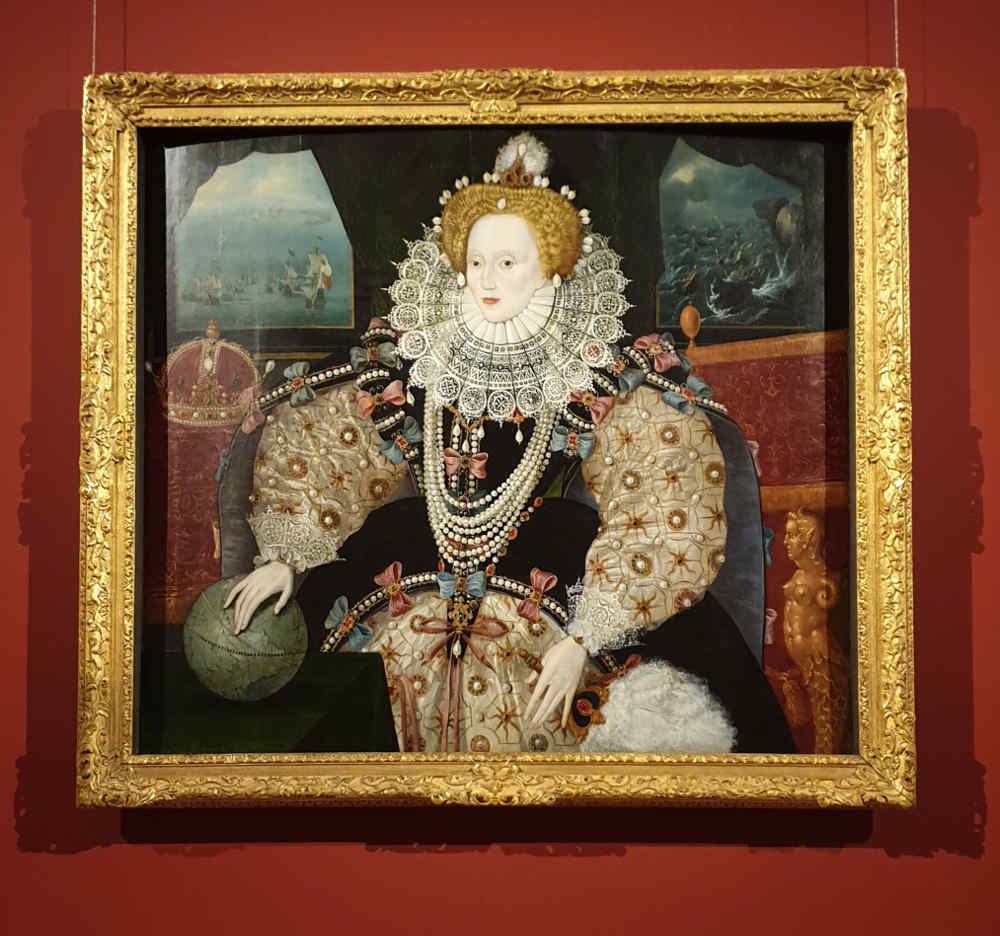
See Queen Elizabeth I’s famous Armada Portrait. The house is on the site of the original Greenwich Palace where she was born.
Whilst you’re here: Go see Lord Nelson’s Coat at the National Maritime Museum next door and visit the Cutty Sark tea clipper.
The Queen’s House, Romney Rd, Greenwich, SE10 9NF. Admission is free (there may be a charge for temporary exhibitions).
A Tiger and Serious Bling at the V and A
The Victoria and Albert Museum in Kensington is the world’s largest museum dedicated to decorative arts, design and sculpture. It forms part of the Albertropolis set of museums which includes the Natural History Museum and the Science Museum.
Tipu’s Tiger. This strange automaton was made in 1795 for Tipu Sultan, the ruler of the Kingdom of Mysore in India. It was meant to express Tipu’s hatred of the British and the East India Company. The mechanism inside moves the hand of the British man who wails, whilst the tiger, who represents Tipu, grunts. There is a side-flap which reveals a pipe organ with 18 notes. When Tipu’s Tiger arrived in London in 1808, it caused a sensation. It is now the best-known work at the V and A and is a must-see for all children. Location: South Asia Galleries.
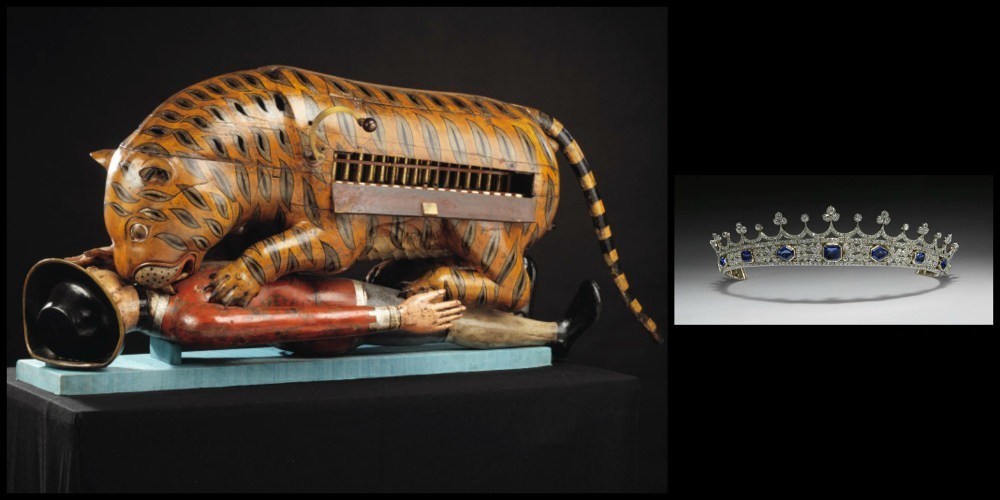
Queen Victoria’s Coronet. Queen Vic’s sapphire and diamond coronet was one of her most treasured jewels, gifted to her by her Prince Albert in 1840. She would wear the coronet in one of her most famous portraits. She also wore it on top of her widow’s cap for the State Opening of Parliament in the year following the Prince’s death. Location: Jewellery Galleries.
Whilst you’re here: check out all the free family workshops and events at the V & A. Visit the Gamble Room, the world’s first museum café, for tea and cake (the V and A was also the first museum in the world to use gas lighting in its galleries.) Remember to look up at the Dale Chihuly chandelier when you walk into the museum’s Cromwell Road entrance hall.
Victoria and Albert Museum, Cromwell Road, SW7 2RL. Admission is free (there may be a charge for temporary exhibitions).
Anglo-Saxon Loot at the British Museum
The British Museum has one of the world’s largest collections dedicated to history, art and culture. It’s gargantuan and it’s easy to get lost, so arm yourself with a map and some patience.
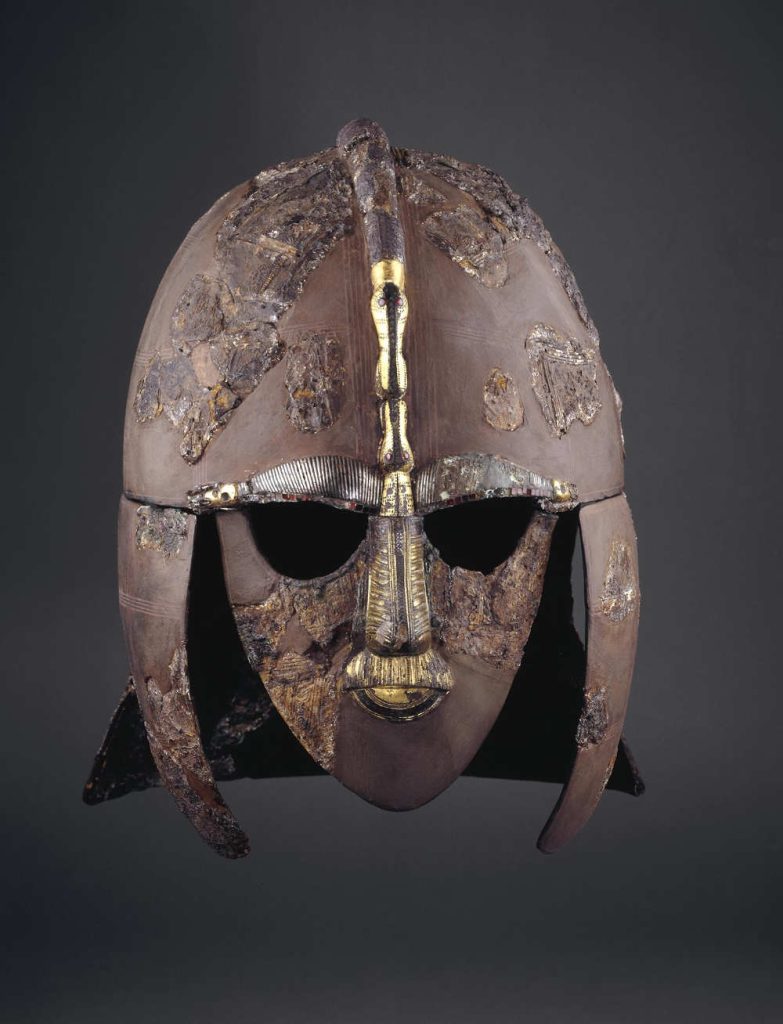
The Sutton Hoo is a treasure trove of objects thought to have belonged to the Anglo-Saxon king, R?dwald. The loot was unearthed in Suffolk in 1939, and it’s one of the most important archaeological discoveries ever made in Britain. Location: Gallery 4
Whilst you’re here: you can’t visit the British Museum without peeping at the Rosetta Stone (Room 4). The Parthenon Sculptures (aka Elgin Marbles), which cause such controversy, are also a must-see. (Greek and Roman Sculpture).
British Museum. Great Russell St, Bloomsbury, WC1B 3DG. Admission is free (there is a charge for temporary exhibitions).
Lord Nelson’s sword at the Museum of London
The Museum of London tells the story of our capital nation from prehistoric times to the present day. The Lord Mayor’s Coach, a debtors’ prison cell and a Victorian Walk complete with shops and buildings are some of the favourite exhibits at the museum.
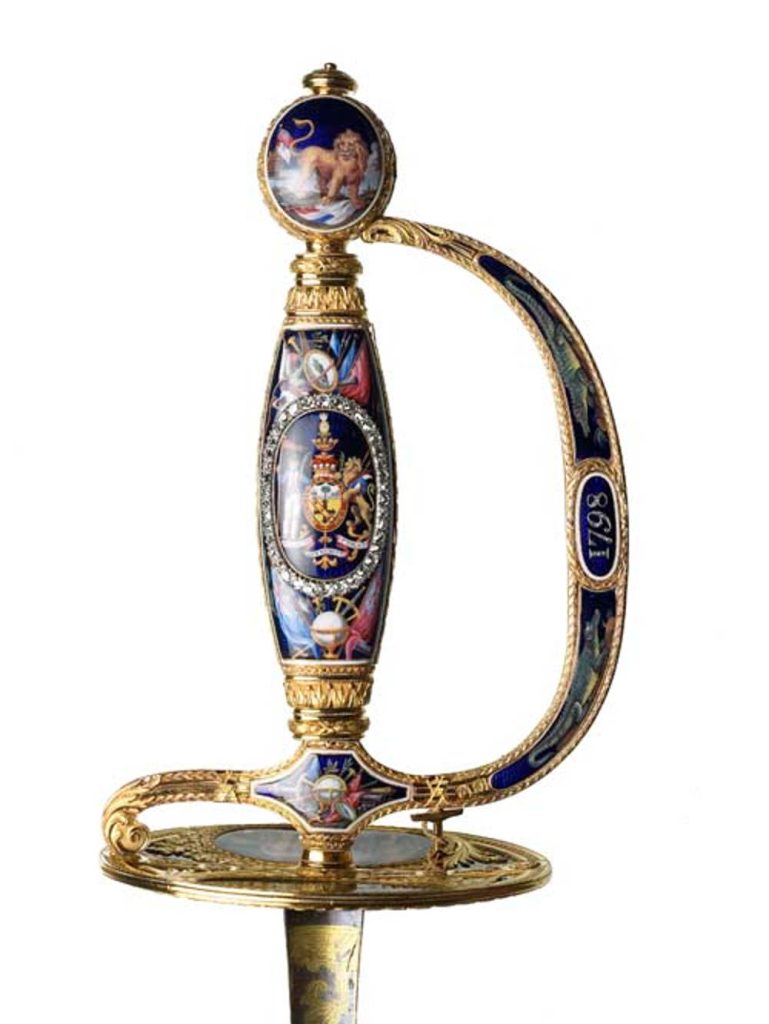
Nelson’s Sword. This bejewelled sword was presented to Admiral Horatio Nelson to commemorate his victory over the French in the Battle of the Nile in 1798. The sword was made for his left hand after he lost his right arm in 1797. Check out the sword decorations, including the lion standing over the French flag and crocodiles which represent the Nile.
Whilst you’re here: Don’t miss the Blackett Dolls House and look out for the remains of the Roman City Wall outside (towards Noble street).
The Museum of London, 150 London Wall, EC2Y 5HN. Admission is free.
Sculptures in London every kid needs to see
Peter Pan statue in Kensington Gardens
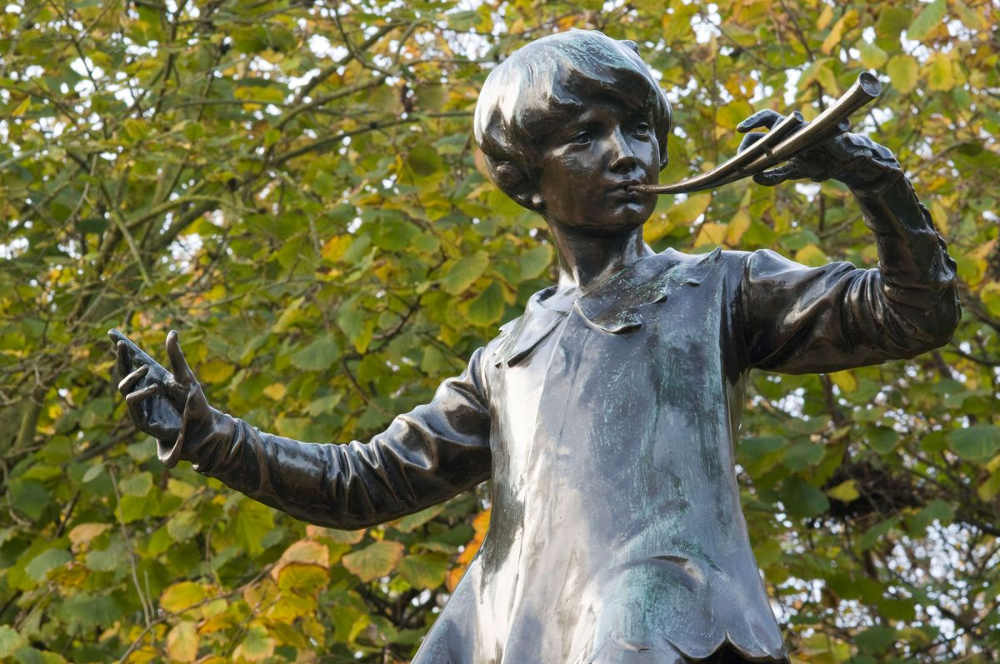
JM Barrie, author of Peter Pan, commissioned this statue in 1912. He installed it without permission so that it would look as if the statue had magically appeared. Swipe your smartphone on a plaque adjacent to the statue and you will receive a personal call-back from Peter Pan.
Animals in War on Park Lane
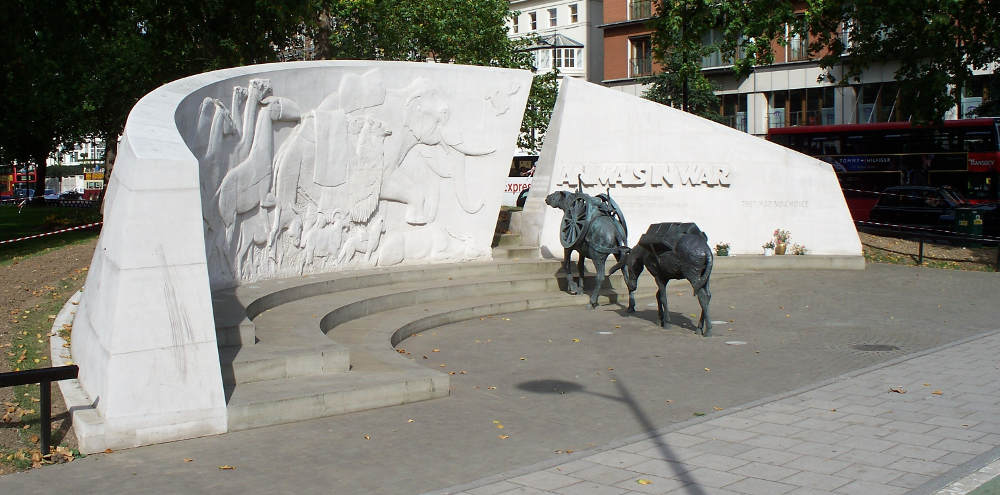
This moving tribute to the animals that died and served during the wars of the last century is located at the top of Park Lane. You might need to take tissues with you.
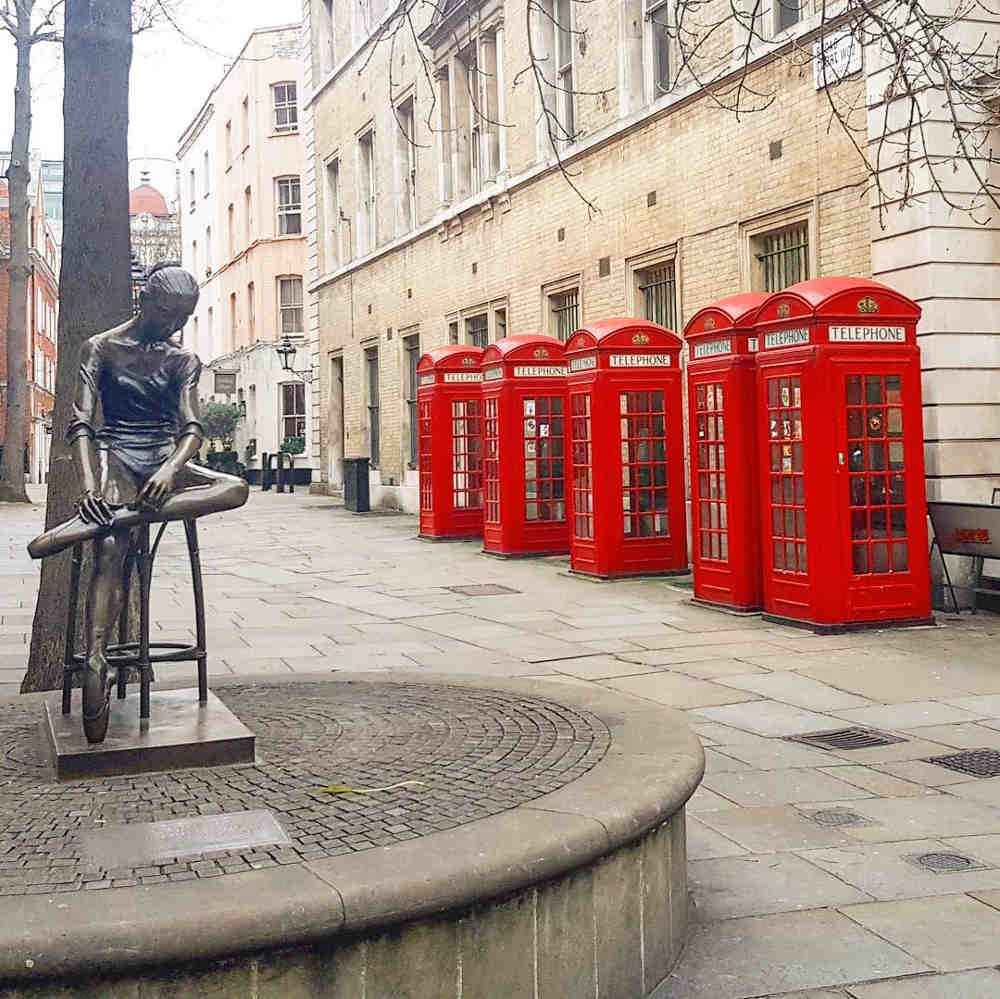
Ballet Dancer in Covent Garden. Budding ballerinas will love the beautiful statue of a young ballerina by Enzo Plazzotta. Whilst you’re here, pop into the Royal Opera House and head upstairs to the top floor where you’ll see Margot Fonteyn’s black swan tutu.
Just Because: The Walrus at the Horniman Museum
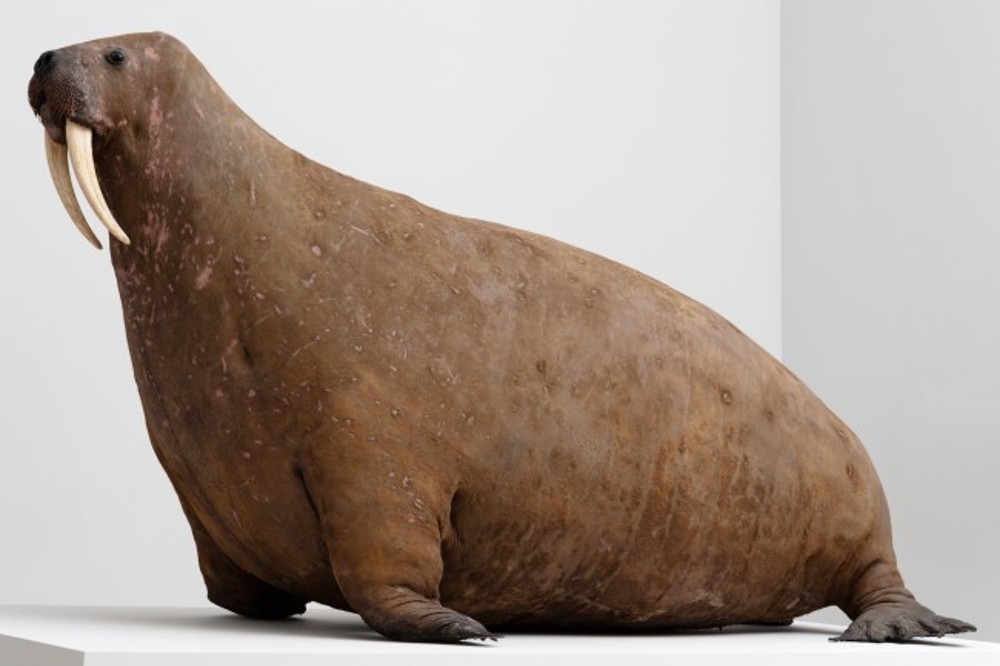
The Horniman Museum is a mini-version of the Natural History Museum and you won’t have to queue to get in. You may not bump into dinosaurs here, but you will meet this large fellow who is a London celebrity.
Whilst you’re here: walk around the Horniman Gardens and weather permitting, pack a picnic.
The Horniman Museum and Gardens, 100 London Road, Forest Hill, SE23 3PQ. Admission is free (there may be a charge for temporary exhibitions).
Is there any must-see art for kids in London that you recommend?


Leave a Reply